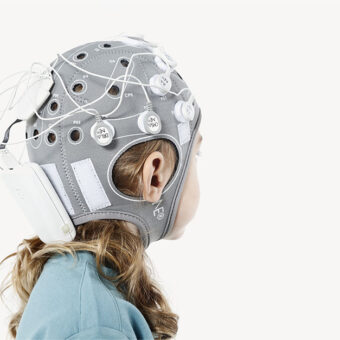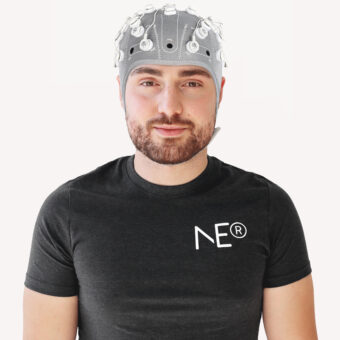During the next weeks in Starlab/Neuroelectrics we will conduct a study on meditation patterns measured in EEG brain signals. First of all, I would say that previously I had no idea about what mediation was, I have never practiced yoga or any other meditation technique, and obviously I am far from being an expert in the field. After reading and learning a bit about meditation, its effects and scientific evidences I have realized that this is a fascinating topic with a wide variety of potential applications. Through this post, I would like to share some information that I have gathered about this topic. Please feel free to comment, add any information you may consider relevant or even refute what it is written!
Meditation is an ancient spiritual and healing practice that has been practiced in some parts of the world for thousands of years. In the Indus Valley, archaeologists discovered evidence of meditation in wall art dating from approximately 5,000 to 3,500 BC. The images depict people sitting in what many of us would recognize as meditation postures. In other words, the figures sat on the ground with crossed legs, hands resting on their knees, and their eyes slightly narrowed but not completely closed.
Nowadays, meditation is extremely popular in Western countries and it is often used as a complementary therapeutic strategy for a variety of health related problems. Meditation in general helps people to achieve a better personal balance. During the last decades, studies have revealed the effectiveness of meditation for stress and anxiety disorders reduction, relaxation, pain mitigation, blood pressure reduction or attention among others. Different types of meditation techniques exist, grouped in 7 main categories:
1) Mantra Meditation or Transcendental Meditation (TM): This category comprises meditation practices where the main element of practice is mantra. This mantra is silently repeated while sitting comfortably with eyes closed and without assuming any special yoga position.
2) Mindfulness Meditation: This category refers to meditation practices that cultivate awareness, acceptance, non-judgment and require paying attention to the present moment.
3) Qi Gong: This category refers to an ancient practice from traditional Chinese medicine that combines the coordination of different breathing patterns with various physical postures and bodily movements.
4) Tai Chi: This category describes a Chinese martial art characterized by soft and slow flowing movements that emphasize force and complete relaxation.
5) Yoga: This category includes a broad group of techniques rooted in yogic tradition that include postures, breath control and meditation.
6) Miscellaneous meditation practices: This category describes techniques that combine some of the approaches previously presented in a single intervention without giving prominence to one.
7) Others: meditation practices that do not fall in any of the previous categories J.
All these different types of meditation have a direct effect in our brain activity and, therefore, meditation levels can be measured in the EEG. During meditation stages spectral differences have been found in EEG patterns.
1) In a first stage, alpha rhythm increases in amplitude, it is slowed down in frequency and it is extended to anterior channels.
2) In a second stage, theta frequencies (different from those of sleep) diffused from frontal to posterior channels. They took the form of short theta periods or longer rhythmic theta trains.
3) Rhythmic amplitude-modulated beta waves were present over the whole scalp in a third stage of deep meditation by advanced subjects.
Connectivity measures between EEG channels are also currently being studied to measure meditation. Some connectivity evidences are the synchronisation of anterior and posterior channels or alpha phase synchronicity.
In this sense, meditation can be defined as a practice in which an individual trains the mind or induces a mode of consciousness, either to realize some benefit or as an end in itself. This definition is aligned with neurofeedback. Neurofeedback techniques can extract meditation levels out of EEG signals presenting them to the user who is currently performing any meditation technique by means of visual or auditory feedback. Meditation level monitoring can teach self-regulation and it is currently being used as an aid for meditation itself.
In my following posts, I will keep you updated on our results trying to measure meditation patterns in EEG using Enobio. I will also describe in more detail scientific evidences and EEG changes induced by some of the meditation techniques previously presented. Stay tuned, Ohmmm…




